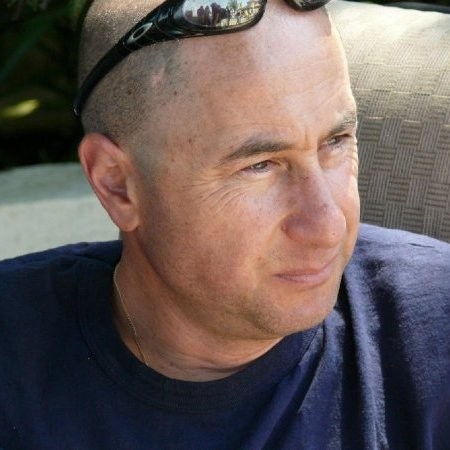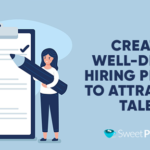Leading Your Team Through a Major Operational Change
Last Updated on February 27, 2022 by Owen McGab Enaohwo
“If it’s not broken, don’t fix it.” The ability of business leaders to question such standards in improving their systems is a gamechanger in business operations.
As the director of operations and database systems at Xtime, Hanan led the organization in their migration to Amazon Web Services (AWS) cloud computing service, a major move in streamlining their operations.
In this episode of the Process Breakdown Podcast, the host, Dr. Jeremy Weisz, engages his guest Hanan Hit in an insightful conversation. Hanan shares his experience and lessons learned from implementing a major operational change at Xtime.
Listen to the audio interview
Subscribe for more business success stories
Key Resource List
SweetProcess — Sign up for a 14-free trial. No credit is required.
Show Notes
[0:26] Intro
- Dr. Jeremy Weisz mentions some of the past guests who have been on the show, including David Allen of Getting Things Done and Michael Gerber of the E-Myth.
- Dr. Jeremy Weisz introduces SweetProcess, a workflow tool that helps businesses streamline their operations even in life-or-death situations.
- SweetProcess offers a 14-day free trial without a credit card.
[1:43] Dr. Jeremy Weisz introduces the guest Hanan Hit.
[2:22] Hanan Hit gives an overview of Xtime.
- Xtime is part of the Cox Automotive family of business units.
- Established about 20 years ago, Xtime started by offering scheduling services to car dealerships.
- The company ventured into marketing and then ERP of car dealerships eventually.
- Its major markets are the US and Canada.
[4:24] Hanan talks about how the popular mantra “If it’s not broken, don’t fix it” affects many operations teams.
- People rely on the formula that works for them without making any innovations.
- There has to be a change of mindset among operations teams for them to be more efficient for employers and customers.
[6:00] How do you convince people to improve effective systems?
- Most operations teams focus on deployment at the expense of cost savviness.
- You have to educate the team about the need to prioritize cost-effectiveness in operations.
- Outline the consequences of not adapting to the latest trends.
[9:00] How did the management team handle Xtime’s migration to AWS cloud computing?
- The migration was a long process, spanning two to three years. Such a project shouldn’t be rushed.
- The management team reassured employees that their jobs were intact.
- It’s important to show humility and seek help from people who have successfully implemented such a process in their organizations and have the expertise.
[14:39] Hanan talks about bridging the gap between your current state of operations and your desired results on a new platform.
- Weigh your options to choose the most suitable method for your operations.
- Decide whether you want to work with some of your existing procedures or build new ones from scratch.
[19:20] How do you keep your team motivated on a long-term project?
- Prioritize your most important tasks, especially the day-to-day operations that cater to your customers.
- Draw a schedule for engaging team members at different stages of the project.
- Task team members to learn about all aspects of the project, including those they aren’t directly involved in.
[25:17] Hanan sheds more light on how the leadership team can inspire team members on a major project.
- Assure the team that it’s okay to make mistakes in the initial phases to build their confidence level.
- Get team members to focus on the result and see that there is an end in sight.
[27:23] Dr. Jeremy Weisz directs the audience to get more information about Xtime by visiting their website, https://xtime.com. He also directs them to check out SweetProcess and the Process Breakdown Podcast.
[27:54] Hanan talks about the lessons he learned about leadership as an officer in the Israeli Navy.
- Xtime failed in its first attempt to move to AWS and learned some vital lessons from the experience.
- The team worked together toward achieving success in the migration and succeeded the second time.
- The resilience displayed by the team reminded Hanan of the team spirit in the Navy.
[29:50] Outro
About Hanan Hit

Hanan Hit is the director of operations and database systems at Xtime. With more than 14 years of direct experience in the administration and implementation of Oracle Solutions, he showcases high-level expertise in Oracle server architecture and enterprise modeling, database sizing, performance tuning, and more.
An accomplished database architect, Hanan drives innovative solutions at Xtime to streamline the organization’s database and operations for success.
Transcript of the interview
Speaker 1: Welcome to the process breakdown podcast, where we talk about streamlining and scaling operations of your company, getting rid of bottlenecks, and giving your employees all the information they need to be successful at their jobs. Now, let’s get started with the show.
Dr. Jeremy Weisz: Dr. Jeremy Weiss here, host of process breakdown podcast, where we talk about streamlining and scaling operations of your company, getting rid of bottlenecks and giving your staff everything they need to be successful at their job. I’m here with Hanan Hit of Xtime. And before I introduce him formally, and I always like to mention past guests of the podcast, people should check out other episodes. We had David Allen of getting things done, Michael Gerber of the E Myth. We had the past COO of Charity Water and many more. So check those episodes out. And this episode is brought to you by SweetProcess. And if you’ve had team members ask you the same questions all over and over again, and maybe it’s the 10th time you’ve spent explaining it, there is a better way. There is a solution. SweetProcess is actually a software that makes it drop dead easy to train and onboard new staff and save time with existing staff.
Dr. Jeremy Weisz: And I was talking with one of the owners, Owen, not only do universities, banks, hospitals, and software companies use them, but first responder government agencies use them in life or death situations to run their operations. So you can use SweetProcess to document all the repetitive tasks that eat up your precious time, your team’s precious time, so they can focus on growing and being empowered. You could sign up for a free 14 day trial, no credit cards required. Go to SweetProcess.com. That’s sweet like candy, S-W-E-E-T process.com. I’m excited. Hanan Hit is the director of operations. He’s responsible for leading the database team in Xtime. Xtime books 44 million service appointments and processes 120 million repair orders annually, and are trusted by some of the world’s leading automotive companies, Honda, Ford, BMW, many, many more. He’s an accomplished and highly respected database architect. He’s frequently a speaker at major Oracle conferences. Hanan, thanks for joining me.
Hanan Hit: Thank you.
Dr. Jeremy Weisz: I wanted to start, we’ll dig deep in leading a team during migration and more, but tell people a little bit about Xtime and what you do.
Hanan Hit: Okay. So thank you. Xtime is part of Cox Automotive family of business units. And then we are actually in the market … Xtime is in the market, like nearly 20 years, now shy of 20 years, but Xtime actually started basically with scheduling and scheduling basically for the car dealership. And then beyond the scheduling itself, like then eventually there was an additional component that we actually put on top of the basic scheduling itself, which actually does the marketing, and now with the conjunction of other views basically in Cox Automotive, we also do the ERP, or the system ERP of the car dealership.
Hanan Hit: So our main basically customers are car dealership and we try to do like 360s for them. And we mostly concentrate on the US and Canada markets where we were basically like a major vendor and was probably the best country that exists. And we are from addressable market, we have a good share of percentage. We do have another segment of the market. We actually have customers basically in Australia, but those are the two main geos, but mainly we’re talking about US and Canada. Yes.
Dr. Jeremy Weisz: Hanan, when we were talking before we hit record, you were saying how a lot of operations teams kind of operate in a certain function and there’s a tendency, if it’s not broken, don’t touch it, nothing needs to be fixed. So I’d love for you to comment about that.
Hanan Hit: Yes. Okay. So, excellent question. So yeah, so it’s especially on operation teams that there is a tendency if it’s not broken, don’t touch it. Okay. And then there is another tendency in operation teams which says that okay, people rely on what they have done in the past, which is okay. Yes. But eventually they say, okay, well, I’ve done this one 15 years ago and then keep on doing that. But once people are looking about this journey or trying to look basically moving to the cloud, and I can speak about AWS because that’s the one thing we’re on, we ended up at, but that type of sentences or that type of basically mindset is not applicable.
Hanan Hit: And it has to be shifted and as a paradigm shift, and the mindset it’s a totally different, and it’s not only that there is a change basically in the way that the application is written or the application is deployed, but that there is a total different mindset that people need to go through in order to be able to be efficient and most probably to be efficient for your employers and your customers. Yes.
Dr. Jeremy Weisz: It’s tough to shift someone’s paradigm, right, because if they’re like, well, this is always … it’s worked, right. It works. How do you approach it with someone to start to inch them to, well, maybe there’s a better way?
Hanan Hit: So it’s not easy. It’s not easy because, one, I can give you a small example. We used to on prem, yes, we used to on prem, not to think, or most of the people, even in operations and definitely in development, they’re not cost savvy. Yes. Meaning they’re looking about deployment, especially for developers. Yes. And also people from operations, there are very, very few that are very cost savvy and this is most probably in the higher management, like directors and definitely the senior or senior manager, but having said that it’s like you learn very quickly that each of us, it doesn’t matter the level, needs to be basically at the point can understand that cost is basically a major part and is associated basically with the move.
Hanan Hit: Second part is you try to educate and you educate yourself first of all, and educate basically the team and come to a position that … people need to understand that basically, okay, it’s a fact that everybody’s going to the cloud. And if you are going to stay with your old philosophies, you are going to stay out at the end of the day. And then so part of the stuff that eventually I looked at is basically leading the team and say, well, okay. It has twofold. One fold, which is the important part, okay. This is how we serve our employers. This is how we serve the customers.
Hanan Hit: The second part is on the personal level saying, well, okay, if you’re not going to do it, yes, very shortly you are going to lose your competitive. And you are going to lose basically what you bringing to the table and you are going to be left behind. And at the end of the day if you are not going to bridge the gap, you’re going to end up in a case that you are not necessary for the company.
Dr. Jeremy Weisz: Yeah. So it sounds like some of the things that you’re thinking about in leadership is, is there cost savings? Is there a better solution? Is there a more efficient solution? Are you working with a possible outdated solution? If you look at five or 10 years in the future, and even though it works now, you may get lost in the dust to competition or other people. And so you’re kind of factoring all these things in, and specifically when we’re talking about with you and the company, you had to lead the team through a major migration. And so I want to talk generally about leading a team through a migration and you moved to AWS specifically, and how you planned it, during the migration then after. So when you were thinking about this, specifically how did you and the team plan?
Hanan Hit: Okay. So, first of all, an enterprise move to AWS or an enterprise move to a cloud vendor, I’m most probably not talking about multi vendor, but single vendor. Yeah. It’s basically journey. Yes. It’s not something that you’re going to do it in a month or two months. Yes. It’s a span, it’s a large timeframe. Years you’re talking about. Two or three years. I think the initial part is it’s basically psychological part of it, and that actually starts with this, because when people hear that eventually, okay, well, we are going to the cloud. That there is also the fact that people started to think about, okay, I’m going to lose my job.
Hanan Hit: And so the shift in the mindset needs to be done at the very beginning and trying basically to bring to the team that eventually, okay, well, we are giving you the opportunity basically to grow and to grow what you’re doing and grow your knowledge. And don’t take it to the other way and say, okay, we are going to discontinue your employment. On the other end, you’re going basically to learn new technologies and enhance your knowledge. Second part-
Dr. Jeremy Weisz: That’s a great point because I could see with new technologies with AI related things, someone could be threatened. That great, I’m going to help you implement this, and I’m going to implement myself out of a job.
Hanan Hit: Exactly. And, in fact it happened in my team as well. Yes. It happened in my team as well. Yes. And, I wasn’t successful. Let’s put it like this, I wasn’t successful retrospect in every person in the team to understand that. But, I think overall most of the people did understand that and saw the benefit in this. I think that if I may say so, our leader for Xtime during this time, he basically drove all the managers and all the senior managements to this mindset and I’m thankful for him. I don’t know if I need to mention his name, but it doesn’t matter. At the end of the day, he basically drove us to this philosophy. And I think it was the right way to do it.
Hanan Hit: The second part, which I think it’s important is when you actually start to think about the process, meaning in traditionally we are working in an agile type of development, and putting everything in the context of a sprint, like which is a biweekly sprint in our case. It doesn’t fly exactly in a way that we project that type of project. So, we have to also shift our mindset in way how to incorporate that into the, let’s put it like this, the deliverable and deliverable schedule on another part.
Hanan Hit: The other part in the first few weeks, for first few weeks or few months, is I would say to take the personal pride out of the equation, and I can speak about myself because I failed to this one as well and take your personal pride and use people, or try to basically get the help of people that have done that, that did it before, or they have a real internal knowledge about something like that. And I can consider myself basically is very good and very good in Oracle, very good in databases, especially in Oracle. But as I said like I learned a lot of stuff moving to AWS and what I’ve done, and thankfully, so with the help of our senior management is we brought basically a consulting film that eventually like was handpicked by Cox and they were actually a company from the UK.
Hanan Hit: And at the end of the day, in the beginning I didn’t look at this, like they’re going to benefit us, but then the minute that they came on work, as they flew from London, I saw that well, they deserved everything. And especially, basically getting the knowledge within, and taking out of the question from, okay they threaten us, or they threaten the team, that actually brought basically a positive power to the team itself, including myself.
Dr. Jeremy Weisz: So the first thing is really get the top leaders in the company, whoever they are, onboard to demonstrate like you’re fine, you’re actually position it in a better way, that you’re not losing your job. You’re actually going to shift roles and you’re going to learn this new technology.
Dr. Jeremy Weisz: Number two, put your pride aside and get the expertise, because even though someone may be a technical genius, they may not have the expertise of that specific migration or software or whatever it is. So get that extra team onboard that does have that, who’s implemented over and over again to overlay with the team’s expertise. And then you mentioned we’re in … like at this point month four, or I’m sorry, month one or month two, and this we’re talking about 12 to 24 months. So then what do you do in the planning?
Hanan Hit: Right. So, the next is basically to try on … what I’ve done, is basically to try to get the knowledge from people that have done this many, many times. And then eventually plug their knowledge and turn my obviously knowledge as well and the team knowledge, which is specific for what we are doing and everything that we have done before and said, okay, well, how can we bridge the gap between what we have here to the end results that we want to get? And I think at that point, one of the quickest decision to be made is whether we looking at type of a lift and shift versus basically rewriting the technology.
Hanan Hit: And I think at that point when it comes to this point, it has to be very clear. It has to be very clear at that point in the next month or so after the first month, as you said. What we are aiming to? And database is a center of gravity in a lot of cases. And what I see is in most of the cases, people will do a lift and shift. But the lift and shift, again, it’s a lift and shift in theory, but it does require a lot of changes. The other component of the application or the other upper level of the tiers of the application, in a lot of cases, they will do either both or they will do a combination or they will go to the extreme and say, okay, I’m going to rewrite all the part in order to be able to match what we are going to end up with. But I think the second or the third month would be basically the understanding that you are going to do a lift and shift-
Dr. Jeremy Weisz: So lift and shift, when you say that, do you mean you’re taking the code from one and just putting it into it? Or what do you mean by lift and shift?
Hanan Hit: So what I mean, lift and shift is basically the code itself, or most of the code itself, at least the way that the code is written, and not doing the lot of management or rewriting the code that will need new technologies. So for example, yes, I can give you, if you’re not running, basically in a case that you are not running in your microservices and all a sudden, like you decided to go to microservices, that’s basically would require some changes, not some, a lot of changes. But this is one part, the second part would be okay, now, if you want to say, okay, I want to change the code.
Hanan Hit: If I’m going to change the code, then eventually from, for example, like if you have store procedure in the database and all of a sudden, like in AWS, you decide to move to a different paradigm, and move everything to upper level of the tiers then that would be a major rewrite.
Hanan Hit: So I think that, especially in the cases like in a move like that, I think that lift and shift would be one part from the up tier. The second tier would be at the level of the databases. So for example, what I’m referring to is if you are on prem, you have databases that are not going to be certified running on the cloud itself, or they need to do some type of basically merging between them into a single one or break them because of some issues, or get exactly what you have and move and move basically to the cloud. That’s basically the lift and shift in that level.
Dr. Jeremy Weisz: I’m just, yeah. For anyone who’s listening, a lot of directors, operations, COOs, I could see it to make it applicable to them. It’s like they may have some current assets they would use on the new system, or they may have to totally redo whatever they did on their old system on the new system. And that would be kind of the equivalent to whatever that may be. So I could see how you kind of have to make a decision, if you bring old stuff or you just have to just do it from scratch on the new one. And I like what you said about bridge the gap. So you kind of know where you’re going and where you’re at now, you may be month three or four of 24 months. How do you keep the team going and motivated knowing like, okay, this is two years from now, we’re going to actually complete this thing.
Hanan Hit: Yeah. It’s actually not a easy task. And the reason why, because obviously we have a day to day job. And we have a day to day job. And by far our day to day job are basically preceding any cases. Of course the customers are the most important part. The way that I looked at that, or the way that I try to do it is I try basically to prioritize obviously the day to day. And then the second part, what I did is I basically even tried to split between the people in the team itself and put them in the different timeframes of the large project instead of actually saying, okay, well, everybody’s going to work on that for the next 24 hours.
Hanan Hit: Yes. I had some issues with this and I’m not sure that this was the right decision, but I think frankly, yes, I think it worked for me, but initially what happened is the people that didn’t start after the immediate decision of the first two months or something like this, they felt that, okay, they’re not part of the project, but I told everybody, okay, this is how I’m going to stagger them. Yes. This is how I’m going to stagger them. It takes a lot of time. Yes. It takes a lot of time. It takes a lot of knowledge.
Hanan Hit: And the second part is, what I did is basically like I gave everybody like a dedicated requirement of reading, reading the new technologies or reading basically new part that they never touch with AWS, in order basically to say that eventually okay, you’re not going to start working over there without actually reading documents, reading blogs and stuff like this, because eventually that will give you the easy path to starting actually working over there and not.
Dr. Jeremy Weisz: You gave everyone kind of a small role in educating themselves no matter if they were involved or not. So they’re a little bit, at least feel involved and a bit up to speed. And the other thing is you kind of staggered people, which seems interesting, because when you’re talking about the migration, it’s funny. When you say it I’m picturing, oh, we’re all in on this migration then I love how you said, yeah, there’s still day to day operations. So in a vacuum, in a mythical world, that’s all someone’s working on. In the real world they have a full day of day to day task and now they have this whole like double time they have to do on this migration. And there has to be a balance between that. So it sounds like you kind of staggered people so that it was like, it was still always being worked on, but people could still get their day to day tasks done and they didn’t feel totally overwhelmed.
Hanan Hit: Yeah. That’s true. And the second part is … the other part that I think that … I basically introduce also technologies that at least part of the team never actually used, even though all the team basically were actually senior people, but at the end of the day, yes, it’s like you have the technology and maybe you are using 20% of the entire technology that’s offered to you. So I think that part basically putting this on top of basically everybody and say, okay, well let me see your knowledge or let me present your knowledge. And then here you have a classical case that you never use it and you’re doing this in a large scale. And then that’s actually would benefit everybody.
Hanan Hit: So, speaking about the next step or the next step after that. There was basically there was an architecture basically decision or architecture, basically rearchitecting the way that we want to work over there. And that basically went in conjunction with very, very large, load testing that we have done. Yes. So in a traditional load testing, you do the load testing just between version A to version N to N plus one for example, or you do the AV testing if you are eligible or you can do it like in other cases. But bottom line is in cases like that, their load testing is not just to see that the system function on prem will function over there.
Hanan Hit: Yes. And you look about the divergence in performance and other cases. But the load testing here is in large project that basically you educate yourself in the way you’re going to operate and what is the best way to operate at the cloud itself? So I think that that’s basically a mindset that needs to be incorporated in any move like that, because if you just want to move, and make sure that, okay, well, I check a few boxes and it’s going to work over there or at the cloud vendor, that’s not the right approach, because eventually once you’re there, if you don’t educate yourself throughout the entire process and throughout the major load testing, you are going to fail, or you’re going to end up in a cost that is exponentially growing and that’s also obviously not acceptable.
Dr. Jeremy Weisz: Hanan, what else would you say was instrumental from a mindset or a leadership perspective with the people to get this migration done, across the finish line?
Hanan Hit: So, obviously nobody likes to fail. Nobody likes to have a failure in what he’s doing. But in my opinion it was okay to fail N number of times during the testing, and go back to the drawing board and eventually end up in a case eventually, like the confidence level growing eventually to the final step would be very high, as high as you can. And even with that, taking into account that the most important part is basically not to impact basically the overall customer base that we have. And obviously not cause any churn of customers because of what you’re doing, because at the end of the day they’re very important, that’s an important part.
Hanan Hit: So I think this is one part. The second part that I think it’s important or was important basically to always keep them basically going, keep the team going and understanding that okay, you are working harder. Yes, you are working harder, but look at this as maybe you are doing this once, or maybe you will do it once or twice in your career at all. And that’s it. It’s not a normal-
Dr. Jeremy Weisz: You’re showing like there’s an end in sight at some point. It’s not going to like, once this is done, we’re going to start the next migration.
Hanan Hit: Correct. Yeah.
Dr. Jeremy Weisz: Got it. Hanan, first of all, I have one last question, but I just want to thank you so much for your time and expertise on this because kind of what you talk about, these are huge projects. And so I kind of invite people to use these same principles in whatever smaller projects they’re working on in their company. And I want to tell people they can check out Xtime, check out the website Xtime.com that’s X, and then time.com. You can check out the process breakdown podcast, check out SweetProcess. My last question Hanan is what was a leadership … what did you learn as far as leadership goes being in the … years ago, you were in the Israeli Navy. What did you learn about leadership there?
Hanan Hit: Yeah, that’s a good question. So fortunately in Xtime my senior leaders, in my opinion, they are very, very tech savvy, and everybody is like … you mentioned the Navy, everybody’s basically in the same ship. So I can be very, very honest. The first time that we moved, the first time that we try to move to AWS, we fail and it doesn’t matter what, but at the end of the day we flip back. We didn’t cause any real problems to any of the customers. We learned the lesson basically, tough. It was just October. And then we have a very short period of time before the Christmas is going to end up.
Hanan Hit: So everybody was very supportive. Just everybody understand. The first and the final move which was just shy of the Christmas of 2019. At that point everybody was supporting us. Everyone in the senior management and at the end of the day, it actually reminded me of the army a little bit, because the day that we moved, everybody actually, literally speaking was sleeping basically in sleeping bags at the office. So that actually reminded me of other products in the past. But I think it was nice to see the level of involvement-
Dr. Jeremy Weisz: Serious dedication to making it happen. So everyone kind of moving together, supporting each other and just doing whatever it takes over that window of time.
Hanan Hit: Yeah. And then there wasn’t any fingering pointing, blaming, or at least not in the level that I saw. And I was thinking this is actually endangering something from the overall move itself.
Dr. Jeremy Weisz: Yeah. Hanan, I want to be the first one to thank you. Thank you so much, everyone check out more episodes of the podcast and we’ll see you later.
Hanan Hit: Thank you. Thanks for your time.
Speaker 1: Thanks for listening to the process breakdown podcast. Before you go, quick question. Do you want a tool that makes it easy to document processes, procedures, and or policies for your company so that your employees have all the information they need to be successful at their job? If yes, sign up for a free 14 day trial of SweetProcess. No credit card is required to sign up, go to SweetProcess.com, sweet like candy and process like process.com. Go now to SweetProcess.com and sign up for your risk free 14 day trial.
Owen: Hi, this is Owen, the CEO and co-founder here at SweetProcess. If you’ve enjoyed listening to this podcast interview, actually, you know what I want you to do? Go ahead and leave us a five star review on iTunes. That way we get more people aware of the good stuff that you get here on this podcast. Again, go on to iTunes and leave us a five star review. Looking forward to reading your review, have a good day.











Leave a Reply